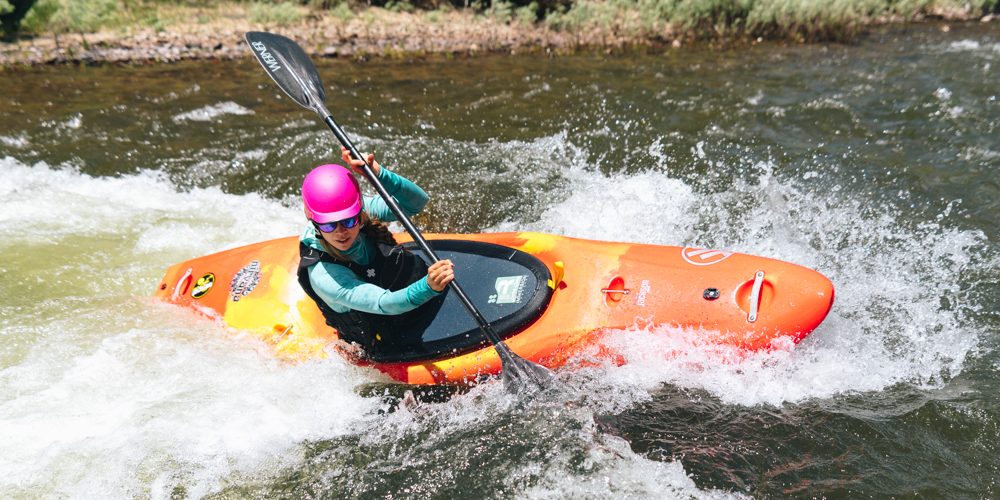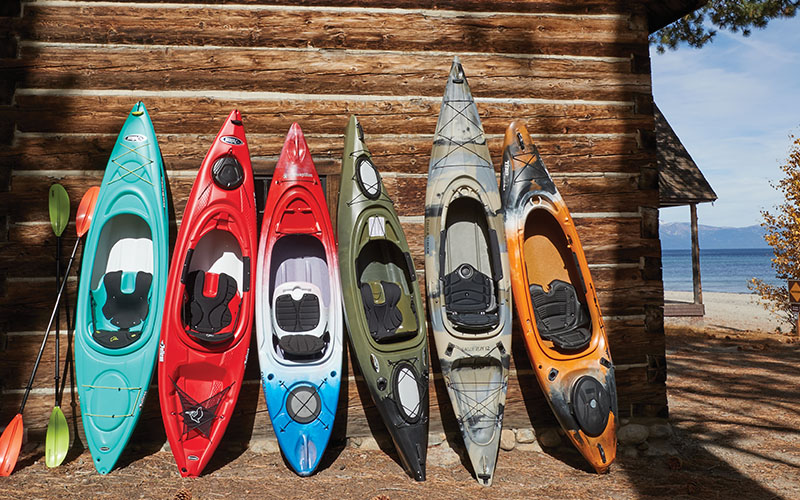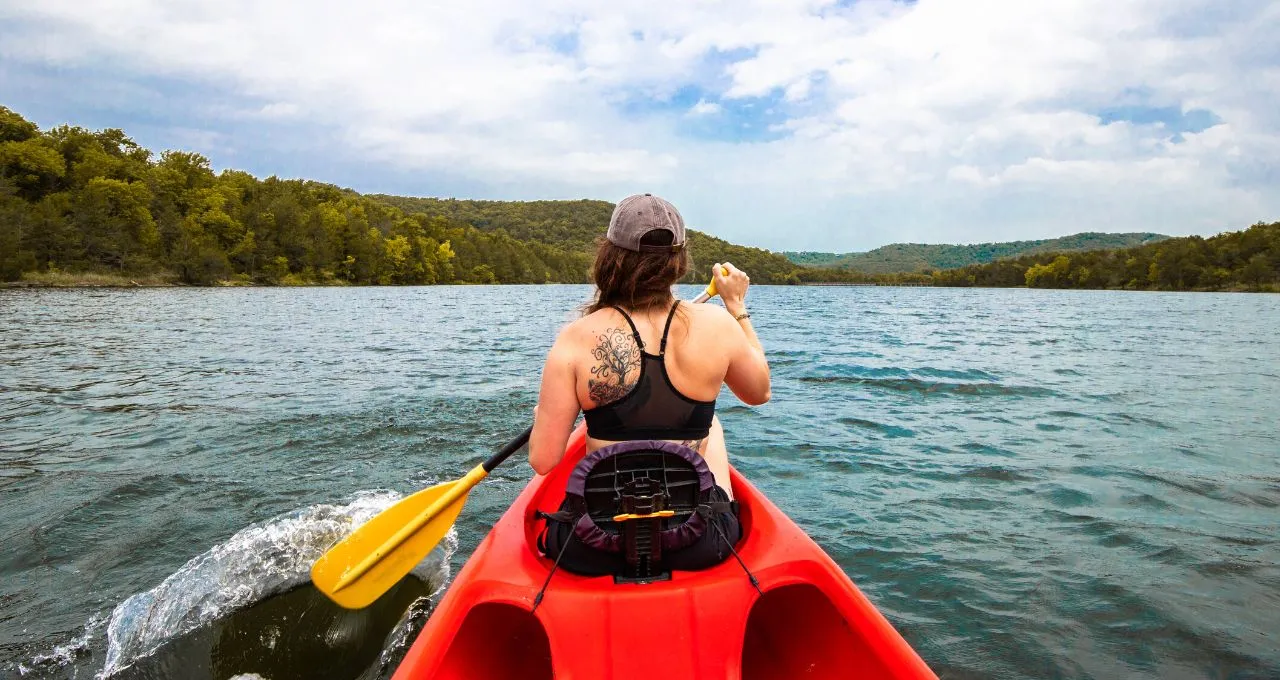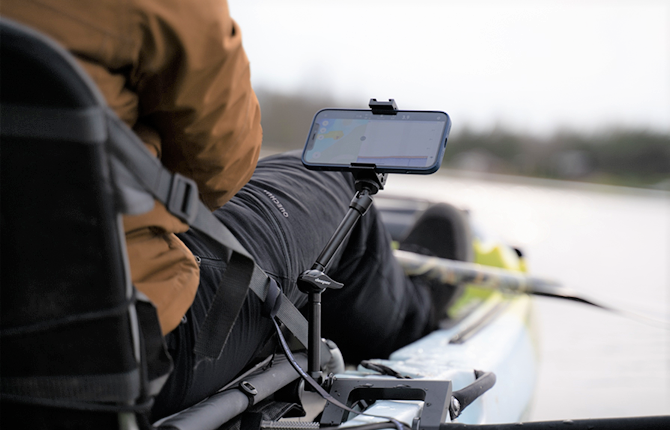
Kayak Types - Buying Guide And Recommendations
A day spent kayaking with friends and family is one of the best feelings in the world. Likely, you don't need convincing if you're reading this. Let's get straight to the point and discuss why you're here.
You are interested in joining the elite community of kayak owners but aren't sure which one to get. You've probably seen different types of kayaks in various shapes and capabilities, and you don't know where to start. Lucky for you, we have all the answers, and we provide a comprehensive buying guide and top recommendations to help you pick the right one.
Where Will You Use Your Kayak? Types Of Kayaks
We need to establish a few things before we can even begin discussing the different types of kayaks. Where are you planning on using it? Since they tend to float in water, you might wonder why this is important.
Even if this is true, there are specific kayaks for specific environments. You should first identify the type of place you're going to use it and how you will use it if you want to get the most out of your kayaking experience. Kayaks can be designed for water rapids or still waters, just as cars are for off-road use. Models of kayaks are designed for maximum performance within their respective environments.
Generally, there are two types of water bodies. The inland water environment includes canals, ponds, inlets, bays, lakes, and smaller rivers. In addition to open waters, there are also larger water bodies, such as large lakes, rivers, seas, and oceans. Kayaking in small waters versus open waters with huge waves is an entirely different experience. Let's dig deeper into this.
Canals And Rivers
This category includes a wide variety of waterways. Many rivers offer gentle and smooth rides downriver. As you battle through whitewater rapids, you may also experience adrenaline rushes. Kayaks should only be used by kayakers who are comfortable in rough waters. While kayakers of all levels should be extra vigilant when navigating these waterways since they habit of abruptly changing without warning. Both above and below the water's surface, the speed and level of activity can change in seconds.
Ponds And Lakes
You can enjoy a calm and relaxing ride as you paddle on a quiet lake or pond. The weather is perfect for gliding across the water's surface without any distractions from the shore. The downside of kayaking on a large lake is that you may encounter large waves that can be dangerous for you and your boat.
Oceans And Seas
A sea or ocean's level of activity can also change, much like rivers. Kayakers can find it challenging to navigate these waters due to weather conditions, tide fluctuations, wind speed, and other elements. It is always good to stay close to the coast to avoid getting into trouble and prevent mishaps by taking all necessary precautions.
Kayaks Have Different Types
You can see from that brief overview why you should choose the right kayak for the environment in which you intend to kayak. If you want an adrenaline rush, you will need a vessel that can withstand the knocks and bumps of navigating whitewater rapids. The right yak is also required if you want to take your family out on a relaxing weekend outing to the small lake in your city.
A kayak can have different styles or be used for other activities.
Related Whitewater kayak buying guide
Kayak Types By Style
You'll come across two main kinds of kayaks - sit-on-tops and sit-ins. The cockpit of the vessel makes a difference between the two types. Open-cockpit sit-on-tops have seats on the surface of the cockpit, and Footrests are absent. Sit-ins, however, have a cockpit that is enclosed. In other words, you can cover yourself from head to toe.
Kayaks With A Seat On Top
Things we like:
- Kids can quickly re-enter the water after falling off
- The kayak includes paddles
- The kayak has an adjustable footrest to accommodate growing kids
- The kayak has a strong resistance to impact
- Limited manufacturer's warranty of five years
Things we don't like:
- Not suitable for adults or older children
- Low weight capacity of 130 lbs, may not be suitable for heavier children
- Although lightweight, at 18 lbs it may still be cumbersome for some users to transport
- Molded finger handles may not provide a comfortable grip for carrying
- The slope at the end with a swim-up step may not be convenient for all users to re-enter from the water
- Made of High-Density Polyethylene which may lack aesthetic appeal compared to other materials
- Footrest positions may not be suitable for all riders, particularly those with non-standard foot sizes
- 5-year limited manufacturer warranty may provide limited coverage and leave some consumers wanting more security
You'll come across two main kinds of kayaks - sit-on-tops and sit-ins. The cockpit of the vessel makes a difference between the two types. Open-cockpit sit-on-tops have seats on the surface of the cockpit, and your feet remain outside of the cockpit. The other kind of sit-in, on the other hand, is enclosed with a cockpit that you sit within. That means that you have full coverage from your head to your waist.
Pros Kayaks With A Seat On Top
Kayaks on top have the benefit of being self-bailing, which makes them one of the best kayaks on the market. Paddling leads to splashes and waves that can get into the cockpit of a kayak, and it must be bailed out on its own if that happens.
There is no challenge for sit-on-tops and water drains naturally through built-in scupper holes. Another benefit is that water moves naturally. In contrast to sit-on-top kayaks, the cockpit of a sit-in kayak offers limited mobility. Also, getting into and out of the boat is an inconvenience. However, a sit-on-top kayak's top-deck seat provides greater mobility, which is excellent for quickly getting in and out of the ship.
Kayaks With Sit-Ins
Even though sit-on-tops and sit-in kayaks provide a high degree of stability, sit-in kayaks offer greater control. When kayaking, the kayaker needs to position their body in the cockpit, so their knees, feet, and rear are all snug against the vessel. Furthermore, kayakers in colder climates will appreciate its ability to keep them warm and dry. Sit-on-top kayaks have a higher chance of getting wet since water splashes on them more often. In addition, the weather elements can be freezing if you are outside.
In sit-in kayaks, the lower half of your body stays protected under the cockpit surface, limiting how wet you can get. Spray skirts make the cockpit completely watertight. As a result, you will stay dry and warm.
Kayak Types By Activity
Let us now explore the various sub-categories of kayaks that exist based on their uses.
Kayaks For Recreational Use
Things we like:
- The seat rests relatively roomy, making it possible for paddlers of varying heights, weights, and builds to enjoy themselves while using this kayak.
- Lifetime guarantee is priceless.
- With the purchase of Malibu Two XL, you are entitled to a limited warranty of a lifetime.
- It has an extra-comfortable cockpit with comfortable seat backs and foot braces.
- Throughout the kayak, there are plenty of storage options.
- Carrying and transporting Malibu Two XL kayak is easy.
- Malibu Two XL has the capacity to accommodate two people at once.
- Besides being durable, it is also made of a rigid material that is resistant to abrasion.
Things we don't like:
- Paddles are not included.
- Separately from the comfort plus seatbacks, they have a cost.
Beginner kayakers will find these excellent choices. It has an open cockpit that does not feel cramped, and entering and exiting it are also more accessible. Most models measure up to 10 feet in length, but some are longer. They may not be built for speed, but they provide the stability needed for a leisurely trip through calm waters. Regardless of age or skill level, all kayakers can use recreational kayaks.
The Ocean Kayak Malibu Sit-On-Top Recreational Kayak is our top recommendation.
Kayaks For Touring
Things we like:
- Construction that is relatively lightweight yet long-lasting
- Adaptable, elegant, and steady in its movements
- Suitable for beginning and intermediate paddlers
- A variety of convenient onboard storage solutions
- A cushy ERGOFORM seat with padding
Things we don't like:
- The bow storage hatch is not watertight and slightly deeper than average.
- Attempting to modify the footrests while the kayak is in motion might be difficult.
Pelican - Maxim 100X Recreational Kayak - Sit-in - Lightweight one Person Kayak - 10ft
A sea kayak is also known as a sea kayak. Kayaks of this type are long, narrow, and sleeker than conventional recreational kayaks, with the shortest ones measuring at least 12 feet long. Due to their compact nature, kayakers can roll themselves back upright if their vessel capsizes using their hips and thighs. Kayaks are designed for touring travel fast and far. Due to their large size, they are perfect for long journeys on rivers and the sea. If you want to float around the lake or pond relaxingly, this is not your boat. They are an excellent choice for kayakers looking to go on long expeditions.
The Best Recommendation: The Pelican Maxim 100X Sit-in Kayak
Kayaks For Whitewater
Kayaks like these are made for rougher waters and more aggressive forms of kayaking. Longboats, creek boats, river runners, and playboats are the four main types of whitewater kayaks. In addition to measuring up to 12 feet in length, longboats are well suited for river runs. Since they are long and heavy, they can withstand drops.
In addition to being long, river runners can survive rapid water. The playboat is the shortest of the bunch, measuring six feet, and it rides on standing waves and holes in rapids. It, however, isn't designed to travel down rapids.
If you plan to tackle rapids of different types, you'll have to choose one. The boats that travel down rapids, for example, can handle the bumps and knocks that come with them. Play boats, however, are not meant to take such punishment. Hence, choose the right one based on your specific whitewater activity.
Kayaks That Inflate
Things we like:
- A Quick setup
- It can be carried around with ease, and it weighs less than 20 pounds.
- The bottom, which is made of 21-gauge PVC tarpaulin, is resistant to punctures.
- The backrest makes your riding incredibly pleasant.
Things we don't like:
- The accompanying paddle is not very long-lasting.
Kayaks of these types are the most common. The main advantage they offer kayakers is their ease of storage and transportation. As a result, if you live in a smaller home, such as an apartment, where space is at a premium, you can store away your deflated kayak when it is not in use.
Kayaks like these are perfect for beginners or people who don't kayak frequently. An inflatable option will be ideal if you want to store it out of the way since you can keep it on a shelf or closet.
The Sevylor Quikpak K1 Kayak The Best Recommendation
Kayaks For Fishing
Fishing kayaks may be the right choice if you consider yourself an avid fisherman. Anyone who loves fishing would love these models because of the countless features. Rod holders, additional cargo storage, pedal propulsion systems (often motorized), and mounts for electronic devices are all standard features. A boat like this can handle more weight than a conventional vessel, perfect for hauling gear and storing your catch.
You are better off going for a recreational kayak if you are a casual fisherman who mainly uses your kayak for leisure rather than sport. You're better off buying a fishing kayak if fishing is your primary reason for going out on the water.
The Best Recommendation The Lifetime Tamarack Angler 100 Fishing Kayak
Kayaks For Two
Lastly, but not least, are tandems. Kayaks with two seats are more common than most people familiar with single-seaters. You can use them on calm, still, waters of smaller lakes and quiet ponds if you often plan to kayak with a partner. When this type of vessel capsizes, most people find it much harder to recover due to the additional weight of having two people on board.
The Intex 68310VM Dakota K2 The Best Recommendation
Related Whitewater Kayak Types
Kayak Buying Guide - How To Choose The Right One
Here are a couple of things you need to consider when purchasing a kayak for on-water activities.
Maneuverability
A lake, sea, or open river has fewer obstacles than ponds, creeks, or rivers. These types of waterways are well suited to recreational kayaks. Kayaks built for touring are designed for open waters where you won't need to make sharp turns or sudden direction changes.
Speed
A touring kayak exists for those who intend to traverse long distances on water and arrive at their destination quickly. Due to their longer, narrower shape, they provide less resistance. Instead, a recreational kayak will suffice if you prefer to paddle around your favorite water spot.
Size
Kids and smaller individuals are better suited to recreational and light touring kayaks. They may, however, not be suitable for more prominent individuals. Such individuals would benefit from touring kayaks because they provide greater comfort and mobility. Also, make sure you can quickly get in and out of your sit-in kayak.
Storage And Transportation
The storage capacity of recreational and inflatable kayaks is greater than the capacity of touring yaks. The kayak you purchase must be easy to transport and equipped with storage space for your essentials while on your kayaking expeditions.
Explore A Whole New World Of Adventure
Knowing all the different kayaks, you can choose from, make sure you choose the right one for your environment and activities. Whichever kayak you choose, you're sure to have the best on-water experience of your life. Now, buy your kayak, and you won't regret it.






















